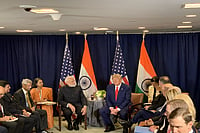
Thinking it was a prank, he responded hesitantly, asking for the digital signature, which authenticates the identity of the sender. With his background in computer security and digital intelligence, Ankit discovered the sender was actually a US intelligence agency. The task at hand was to decrypt a baseball cartoon found in the laptop of an Al Qaeda operative. Stegenography, a computer language that helps hide messages in audio, video and text files and is widely used by terrorist outfits, was in vogue then. Says Ankit: "I had to know the algorithm that was used to encrypt the password and which would enable me to read the message." Using a programme called Brute Force, Ankit toiled for 10 days and cracked the order of the algorithm and the password in the cartoon. "It was an innocuous message asking if everything was alright, but I passed it on," he says. Since then, he has been involved in numerous classified projects. Says Ankit: "Once I zeroed in on some hackers in Pakistan and gave pinpointed information on their locations."
All this has enabled the digital whizkid to really hit it big. He now heads the Asia operations of the US-based digital intelligence agency, which assists the two premier US intelligence outfits—the FBI and the CIA. With two bestsellers under his belt, one of them being The Unofficial Guide to Ethical Hacking, he heads for Stanford this year to be an "undergrad" in computer sciences and specialise in his pet subject—international security and computer networks.






















